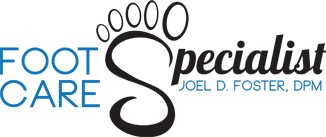Your feet are the foundation of your body, and taking care of them is essential for maintaining mobility, comfort, and overall well-being. Whether it's keeping them clean, wearing the right shoes, or incorporating regular stretches, these small steps can make a big difference in your overall foot health. Here are five simple but effective tips for healthy feet!
1. Keep Your Feet Clean and Dry
Without proper care, moisture from sweaty feet can lead to skin irritation, fungal infections like athlete’s foot, or unpleasant odors. To prevent these issues, make sure to wash your feet daily with warm water and soap. After washing, dry your feet thoroughly, especially between your toes, as this is where moisture tends to collect. If you sweat excessively, you may consider using an antiperspirant to help reduce excessive perspiration or a shoe spray that kills fungus and odor-causing bacteria on contact.
Aarica Roll On is an antiperspirant recommended by Dr. Foster that is designed to reduce excessive perspiration and wetness. Infused with black tea extract and sodium bicarbonate, this odor-absorbing roll-on solution is a great product to help reduce sweat.
Tolcylen shoe spray has antibacterial, antifungal, and sporicidal properties, making it great at getting rid of foot odor and stopping fungal growth. The active silver ions can penetrate both the leather and insoles, keeping your footwear free of microbes for a long time. This is a great product to help keep sweaty feet clean and prevent bacteria and foot odor.
Both of these products are available for purchase at our office - 6 NW Sycamore St. Ste. A, Lee’s Summit, MO, 64064.
2. Wear Proper Shoe Gear
Wearing the right shoes is crucial for foot health. Shoes that don't fit properly, or those that offer inadequate support, can cause a variety of foot problems. Proper footwear helps distribute pressure evenly across your feet, reduces the risk of injury, and promotes overall foot stability. Here’s what to look for when searching for the right shoe:
-
Stable Midfoot: Look for shoes that do not bend excessively in the arch.
-
Neutral Heel: Firm structure at the back of the shoe that holds your heel in place, reducing unwanted motion.
-
Avoid Shoes with Medial or Lateral Wear: Patterns - either excessive wear on the inner or outer side of the sole. This can indicate instability of unbalanced foot mechanics.
-
Wide Toe Box: Allows the forefoot to expand naturally with each step. Ensure that there's at least a finger's width between the end of your longest toe and end of the shoe.
3. Invest in a Good Pair of Custom Orthotics
Custom orthotics are often among the least invasive and most effective treatment options for a wide range of conditions. They provide support for weak or flat structures, relieve pressure from painful tissues and joints, and even help correct your walking pattern, allowing you to move through your day without discomfort. These devices are individually manufactured and made from a mold of your feet, taking your height, weight, and foot structure into account. This casting process is extremely important, and we take great care to make sure we’re capturing your feet in a biomechanically correct position.
The cost of a pair of true custom-made and individually calibrated foot orthotics is only $375!
If we’ve already treated you and developed your first orthotic cast, you can order a second pair of orthotics for just $300. If you’re considering them, schedule an appointment with us to get the right treatment and save money.
4. Stretch Your Feet
Just like the rest of your body, your feet can benefit from regular stretching to maintain flexibility and prevent stiffness. Stretching exercises can improve the range of motion in your feet and lower legs, and reduce the risk of injuries. Muscle tightness in the feet and calves can make the pain of plantar fasciitis worse. Loosening the calf muscles can relieve pain. Try the following stretches!
-
Wall stretch
- Lean with your hands against a wall.
- Step the affected foot back and keep the heels flat on the ground.
- Slowly lean forward into the wall, bending the front knee until you feel a stretch in your back calf.
- Hold for 15-20 seconds.
- For best results, repeat this exercise off and on for as many times as possible throughout the day.
-
Towel stretch
- Sit on the floor with legs straight, loop the towel around the ball of the affected foot, holding the ends of the towel in your hands.
- Gently pull the forefoot towards you, stretching the calf, hold this for 15-20 seconds.
- Slowly return to the starting position.
- For best results, repeat this exercise off and on for as many times as possible throughout the day.
5. Moisturize regularly
Your feet can easily become dehydrated due to factors like pressure, friction, and exposure to environmental elements. Regular moisturizing helps keep the skin soft and hydrated. Dr. Joel Foster suggests using a 40% urea cream to hydrate and repair dry, damaged skin. Urea is an effective humectant, drawing moisture from the air and deeper layers of the skin to deeply hydrate dry, rough patches. It also acts as a keratolytic agent, gently exfoliating dead skin cells to leave your feet feeling smoother and softer.
